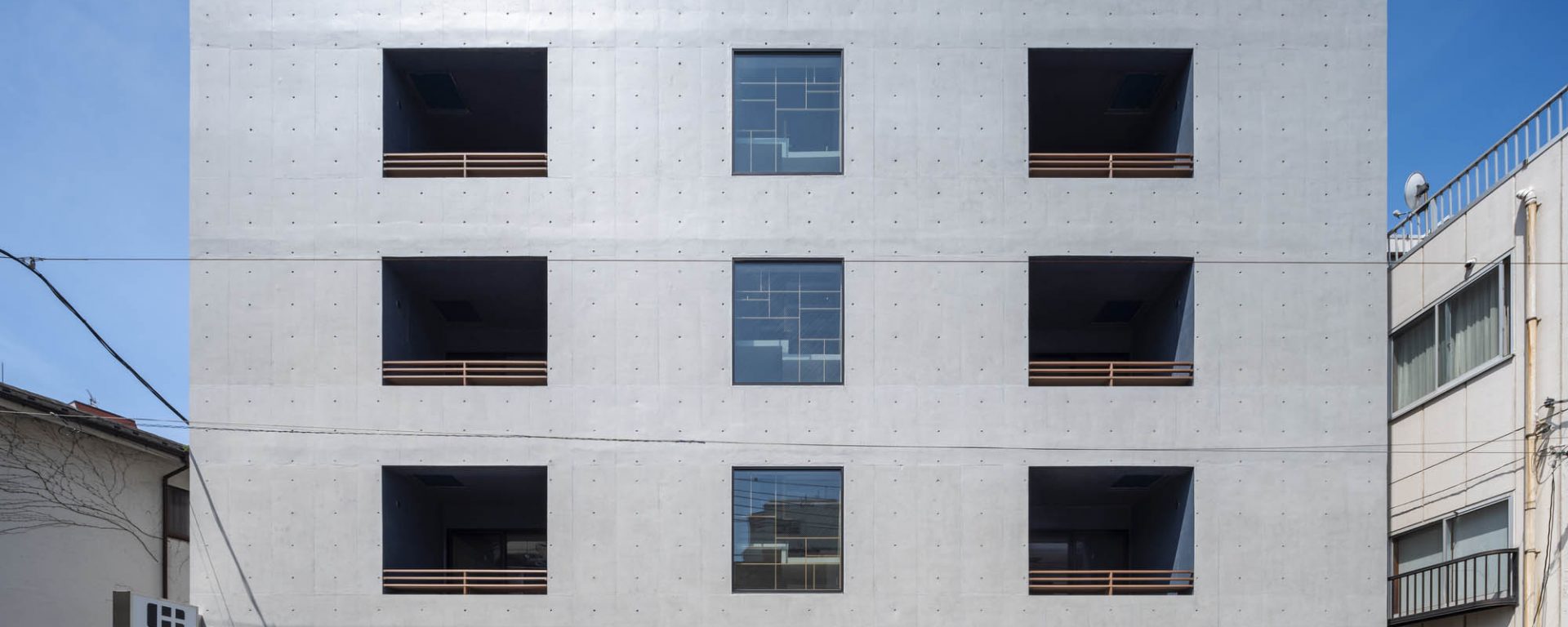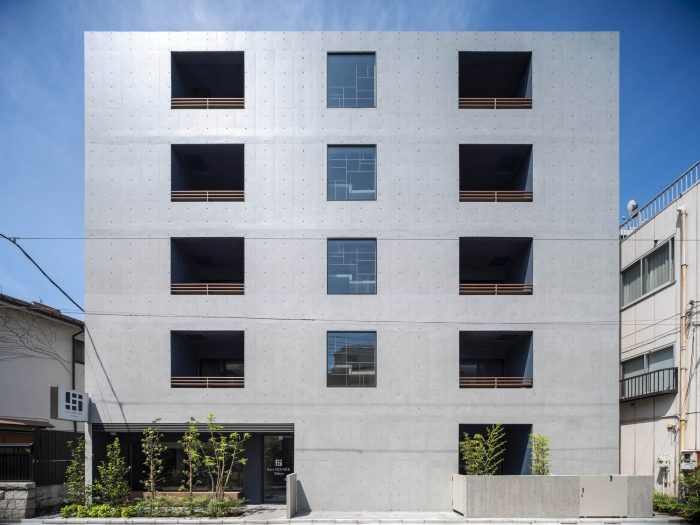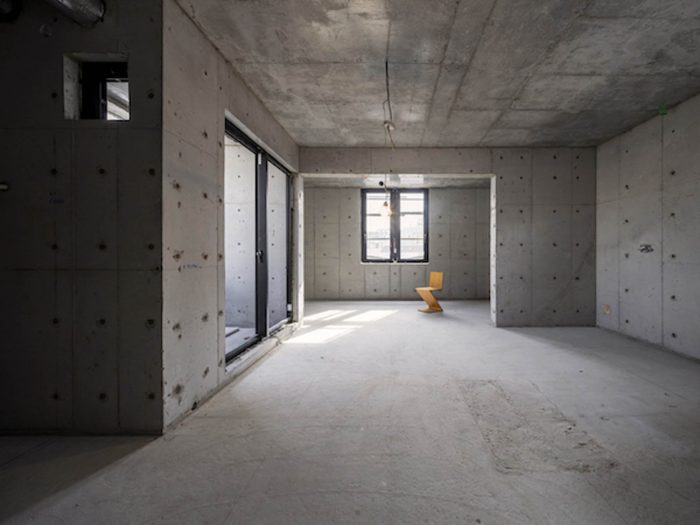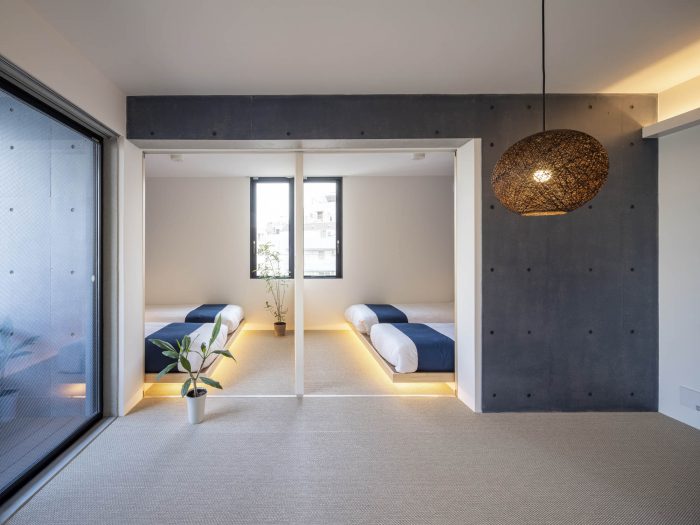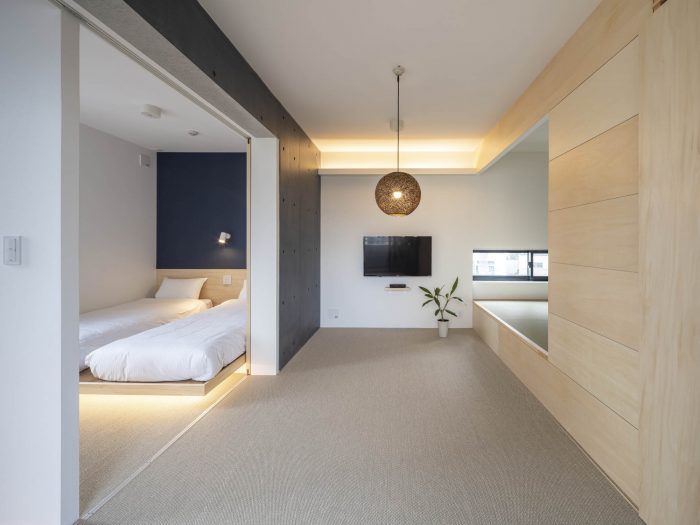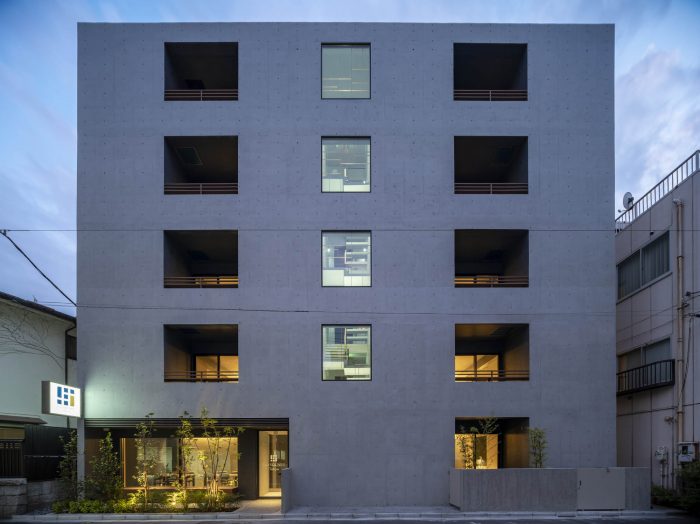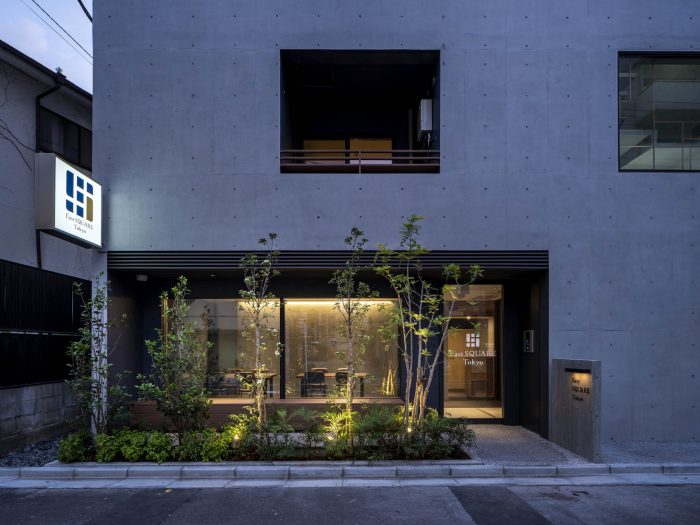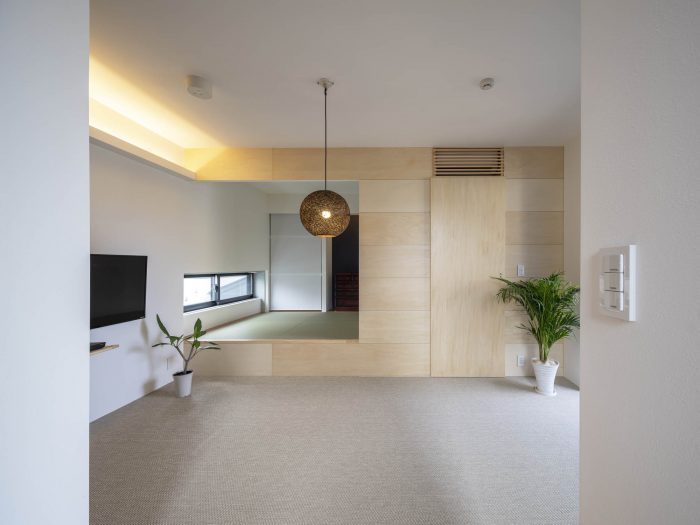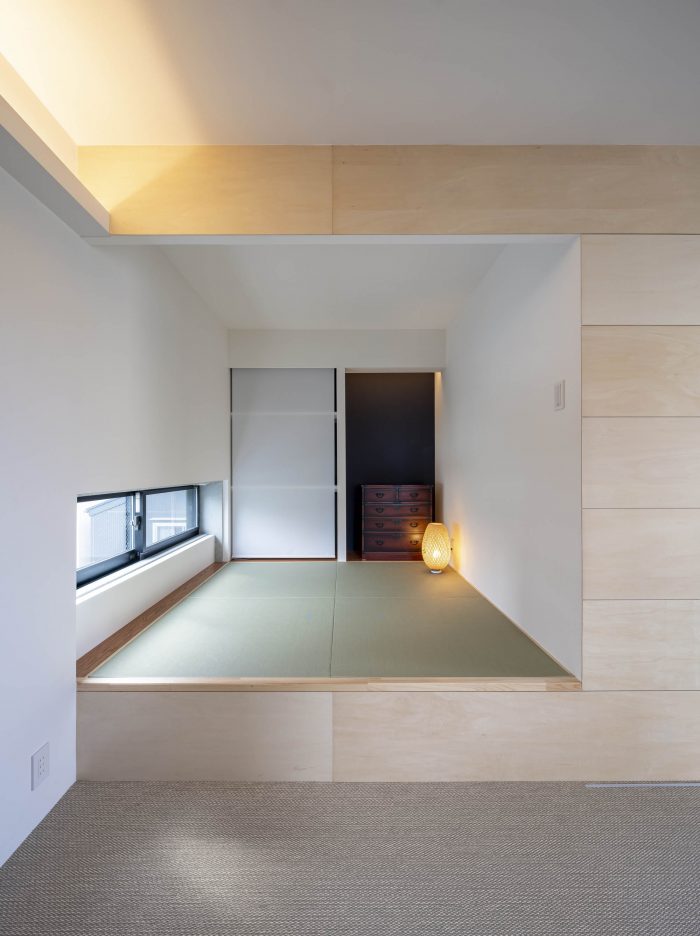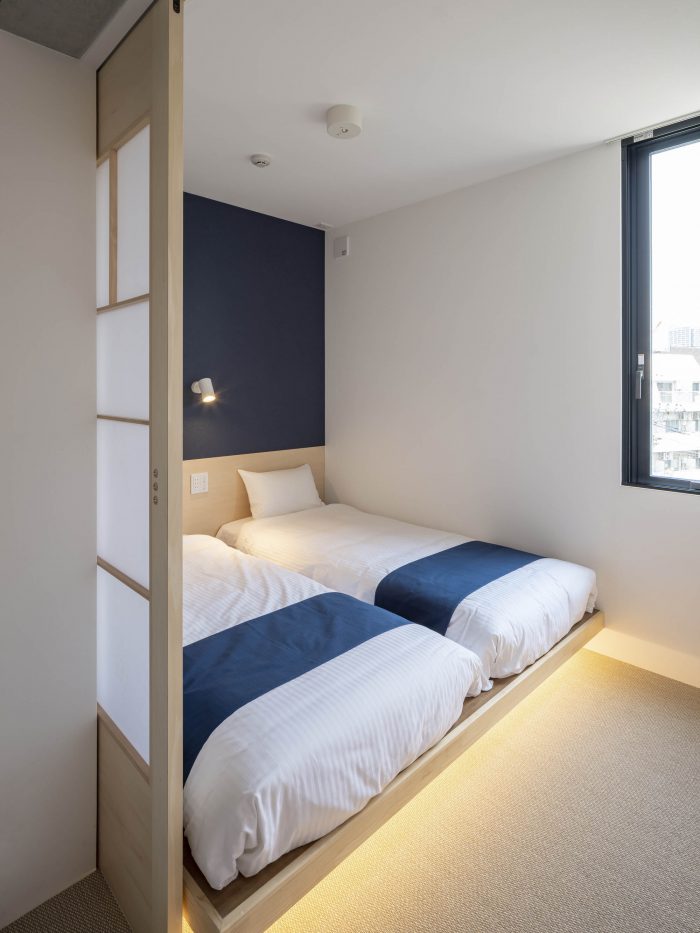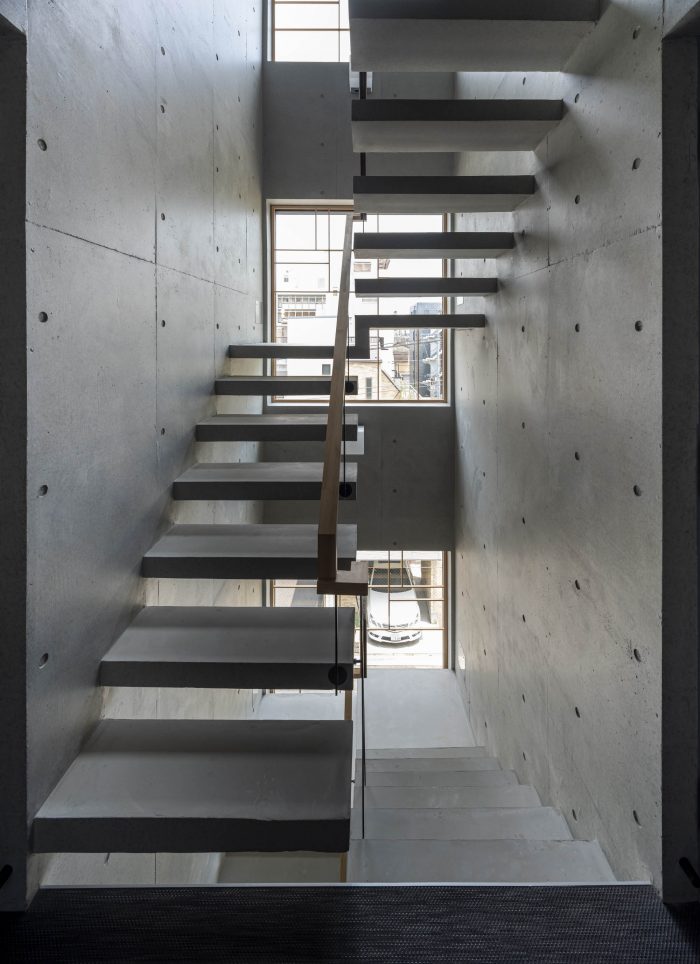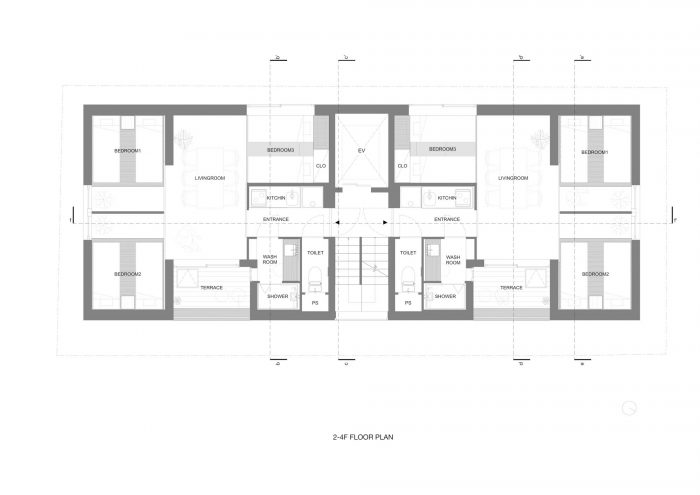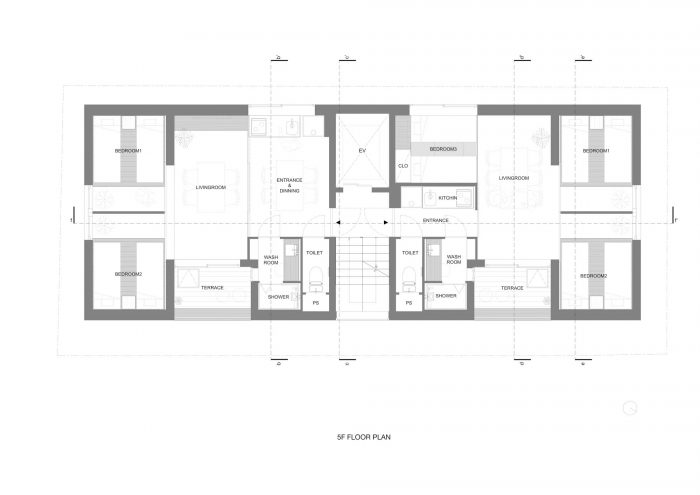利用当地人的力量来传达市中心的魅力–森下位于江户区,在江户时代曾是一个寺庙街。现在作为住宅区和商业区,我们还能看到一些老字号的店铺,感受到市中心特有的老式氛围。为了吸收这种熟悉的魅力,我们设计了一个向游客介绍当地商店的酒店。在入口前放置了一个开放的露台,旨在为客人和附近地区创造一个新的交流场所。
Using the local community to convey the charm of downtown – Situated in Koto ward, Morishita used to prosper as a temple town during the Edo period. Currently standing as a residential and commercial area, we can still find some long-established stores participating in an old fashion atmosphere typical of the downtown. In order to absorb this charming familiarity, we created a hotel that would introduce to visitors the local stores. An opened terrace is placed in front of the entrance, aiming to create a new place of communication for the guests and the neighborhood.
在楼梯对面的每层都分配了两个约40平方米的住宿房间。为了区别于东京的单人床、双床或双人床的房间,我们提供了9个房间,可以容纳众多的家庭成员或朋友。每个房间都配备了厨房和洗衣机,最多可容纳6人使用。这样一来,未来可以考虑将其改造成公寓。
Reinterpreting a traditional style of housing in the present day – The general composition adopts the stairwell style, similar to public housing during Japan’s period of rapid economic growth. Two accommodation rooms of approximately 40 m2 are allocated on each floor across the staircase. With the aim to be distinguished from Tokyo’s offer, where the majority of the rooms are single, twin or double beds, we propose nine rooms able to accommodate a large number of family members or friends. Each room is equipped with a kitchen and a washing machine, which can be used by up to six people. This way, a possible conversion into apartments can be considered in the future.
我们选择使用钢筋混凝土的现代结构,同时保持日本的传统方式来构思空间。例如,上层的榻榻米房间使用了反向的混凝土梁,而下层则包含了传统的坐桌和下层的椅子。这种配置一方面保证了外部的私密性,也保证了安全感。另一方面,通过扩大天花板上的开口,我们鼓励视线向上。这给人一种向外部环境开放的感觉,并有机会欣赏到独特的地理位置,感受到与城市的统一感。
We chose to use a modern structure made of reinforced concrete, while keeping a Japanese traditional way to conceive the space. For example, the reversed concrete beam is used for the upper tatami room, while the lower floor contains a traditional sitting table and lower chairs. This configuration ensures privacy from the outside, and a sense of security. On the other hand, by widening the opening on the ceiling, we encourage the line of sight upwards. This gives a feeling of openness to the outside surroundings, and the opportunity to admire the exceptional location and feel a sense of unity with the city.
在室内空间方面,我们采用了传统的日本元素,如榻榻米、木材、”纸滑门 “或格子。同时,在居住单元的形式上,借鉴了51C模式(战后公营住宅改革中的模式),该模式至今成为公营住宅2DK的标准模式。不再像日本传统格局那样合并在一个房间里,而是将睡觉和吃饭的空间以及隔断的卧室分开。在使空间整体简洁的同时,我们规划了一个融合日本与现代的阴阳结合的建筑。
For the interior space we adopted the traditional Japanese elements such as tatami mats, wood, “shoji” (paper sliding door), or latticework. In the same time, the format of living units borrowed the 51C model (from the post-war public housing reform) which became the standard model for 2DK of public housing up until now. No longer merged in a single room like the traditional Japanese layout, the space for sleeping and eating are separated, as well as the partitioned bedrooms. While making a space simple as a whole, we planned an architecture that combines the yin and the yang by fusing Japanese and modern times.
建筑师:Be-Fun Design
面积: 505 m²
年份:2020年
摄影:Hiroyuki Hirai
制造商:Hitachi, Nemetschek, ADVAN, LIXIL , Sanwacompany, TOKYOKOEI
结构:Mono
施工:Izumi kikaku company
城市 : Kōtō
国家:日本
Architects: Be-Fun Design
Area: 505 m²
Year: 2020
Photographs: Hiroyuki Hirai
Manufacturers: Hitachi, Nemetschek, ADVAN, LIXIL , Sanwacompany, TOKYOKOEI
Structure:Mono
Construction:Izumi kikaku company
City:Kōtō
Country:Japan

